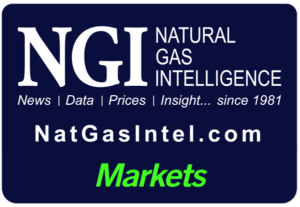LNG | LNG Insight | Markets | NGI All News Access
Strong Natural Gas Production Should Help Balance Market Against Chilly Winter, LNG Demand, AGA Says
© 2024 Natural Gas Intelligence. All rights reserved.
ISSN © 1532-1231 | ISSN © 2577-9877 |

Natural Gas Prices
Lighter shoulder season demand and soft export data overshadowed bullish production estimates and weighed down natural gas futures to kick off trading this week. At A Glance: Weak near-term demand Production remains softer NGI models injection of 55 Bcf The May Nymex gas futures contract on Monday settled at $1.691/MMBtu, down 7.9 cents day/day. Cash…
April 16, 2024By submitting my information, I agree to the Privacy Policy, Terms of Service and to receive offers and promotions from NGI.